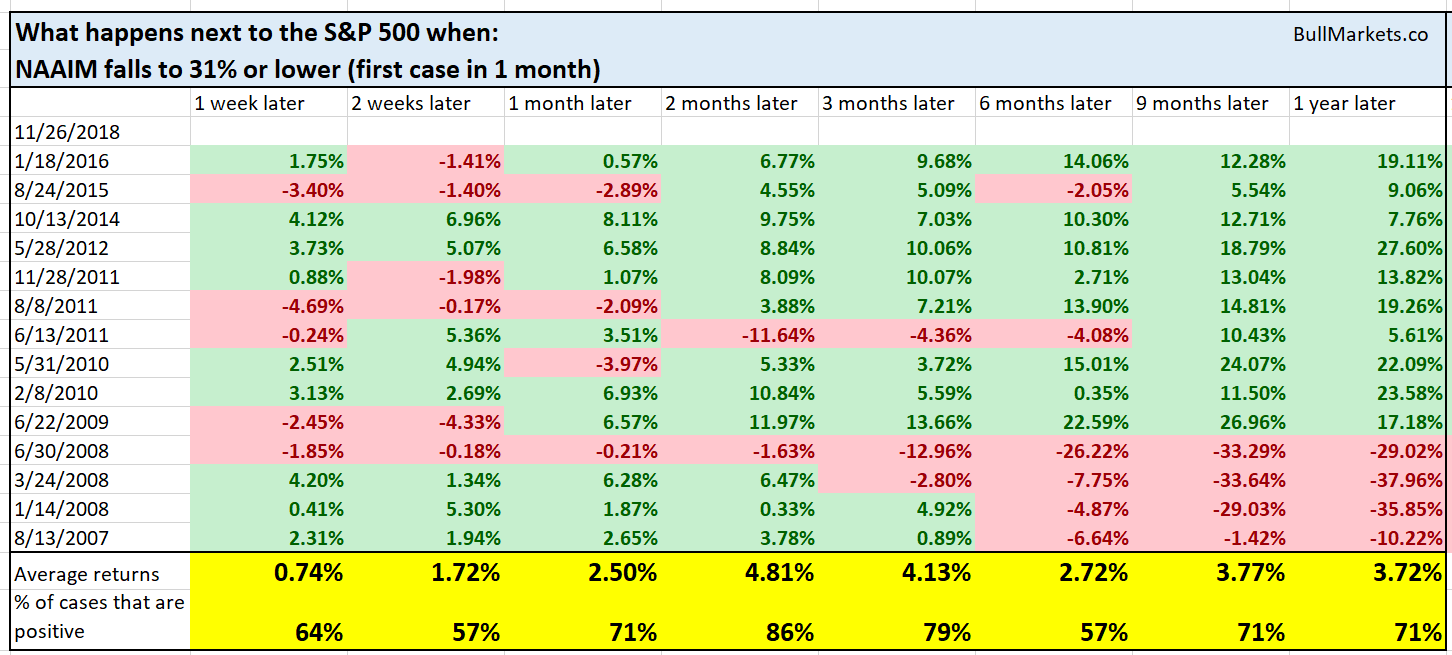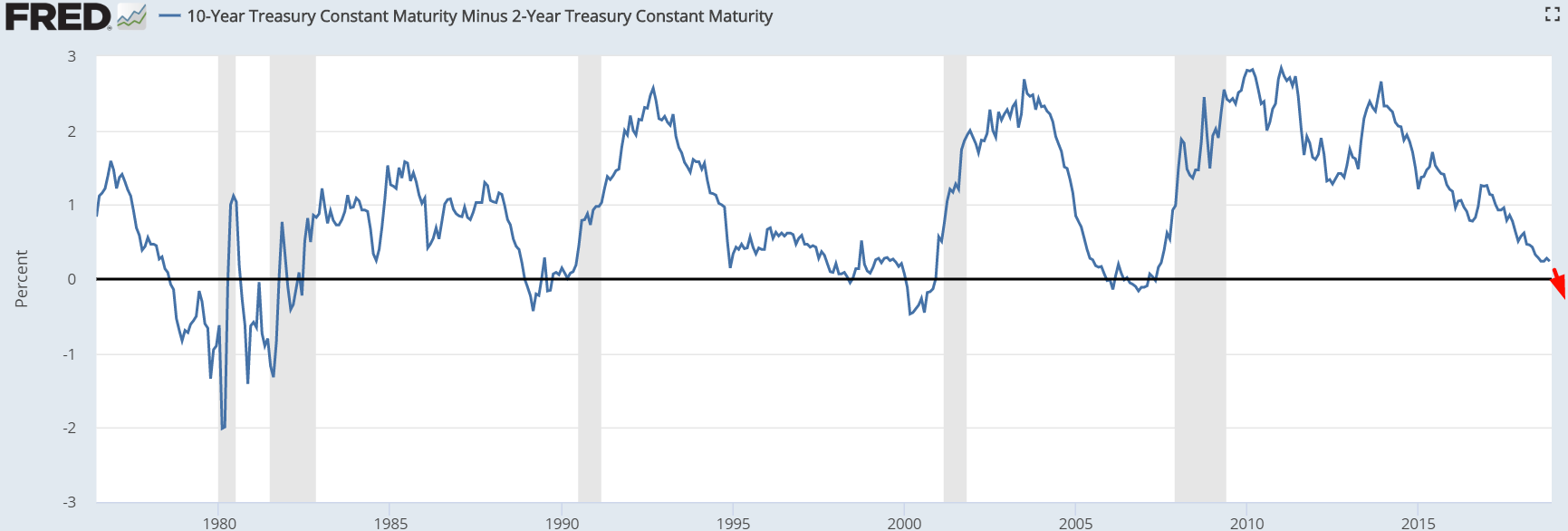
December is almost here, and some traders are looking forward to the Santa Claus Rally. We demonstrated that seasonality is not consistent. Hence, seasonality factors are of secondary importance.
Let’s determine the stock market’s most probable direction by objectively quantifying technical analysis. For reference, here’s the random probability of the U.S. stock market going up on any given day, week, or month.

*Probability ≠ certainty.
NAAIM
NAAIM measures the average exposure to U.S. stocks by active investment managers. This is a contrarian signal because most active investment managers (like most hedge funds) underperform buy and hold. They get very greedy after stocks go up and get bearish after stocks go down.
NAAIM is very low right now, at 31%
Here’s what happened next to the S&P 500 (historically) when NAAim fell to 31%
*Data from 2006 – present

As you can see, the stock market tends to bounce 2 months later
Inversion
It’s interesting how all of a sudden everyone has stopped talking about the impending yield curve inversion. The 10 year – 2 year yield curve will probably invert within the next 3 months.

Here’s what happens next to the S&P 500 when the yield curve inverts for the first time in each economic expansion.

As you can see, stocks tend to do well, even after the inversion. Trouble for the stock market tends to start AFTER the Fed stops hiking interest rates, due to a notable slowdown in the economy. That’s why a spike in the yield curve is a better sign for long term stock market problems than a flattening yield curve. (Fed rate cuts = a spike in the yield curve)

Down in October and down in November
If the S&P 500 doesn’t rise this week, it will have fallen in both October and November. The last time this happened was November 2008. But what about all the other times before that?
















